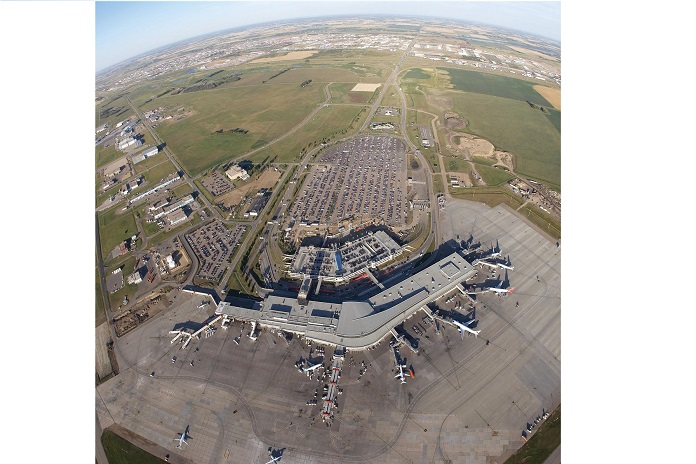A COVID-19 test that can produce results in seconds will undergo a clinical trial at the Edmonton International Airport this fall. In addition to the quick results, the test also eliminates the need for an unpleasant nasal swab.
A start date for the trial hasn’t been determined but the new technology could have global implications, EIA said.
The handheld testing unit, designed by Edmonton based company GLC Medical Inc., uses saliva samples and can determine in under a minute if someone has the virus. “This kind of test will help address the need for a 14-day quarantine period in Canada and potentially other international quarantine restrictions,”. EIA hopes it will result in people feeling safer about travelling again.
“We all want travel to get back to normal and a rapid Covid-19 test will accelerate this return while enhancing passenger confidence in the safety of our industry. While we have seen some growth in recent months, our passenger numbers during Covid-19 continue to remain low and a test like this is crucial to our future. All airlines, airports and the whole travel and hospitality sector are looking for this solution. If EIA can play a role in bringing new technology and science forward by partnering with experts like GLC that’s exactly what we’re going to do. This is an exciting opportunity for all of us,” said Tom Ruth, president and CEO, Edmonton International Airport.
“We are very excited to offer the world a graphene-enhanced rapid solution in Covid-19 virus detection. The opportunity to collaborate with EIA, a world-respected airport authority, to enable travel and to bring families back together is very rewarding for us. This graphene-enhanced rapid test demonstrates the power of graphene innovation to overcome the challenges of COVID-19. GLC is proud to be a part of EIA’s initiative in setting the global standard in safety and reliability for their travelers,” said Donna Mandau, president & CEO, Graphene Leaders Canada (GLC)/GLC Medical..
The test works by using a graphene surface designed to bond to the spike protein in the virus, the release said. The binding changes the electronic characteristics of the graphene which can be measured to determine if a person is infected.
EIA said the next step is to establish a test site. The clinical trial is expected to begin this fall and last several weeks.
“This trial phase will help GLC Medical secure regulatory approval and certification for its test from Health Canada and other regulatory bodies, including in the United States and other areas of the world,”. The test does not require a medical professional and can be administered by anyone who has been trained.
How the test works
• The person being tested provides a saliva sample into the testing unit;
• The graphene surface inside the testing unit is designed to bond to the spike protein in the virus;
• This binding event changes the electronic characteristics of the graphene, and this measurable change is what is used to determine if a person is infected or not;
• The device will show a red or green light in under 1-minute to indicate if a person is virus free or not;
• The test is not required to be administered by a medical professional and training can be administered by anyone, similar to how basic first aid training is done.
The next step is to bring this test and GLC to EIA and establish a safe and secure test site. Details about the testing and the process will be shared in the coming weeks. A start date has not been determined, but once it begins, the clinical trial will last several weeks over this fall. This trial phase will help GLC Medical secure regulatory approval and certification for its test from Health Canada and other regulatory bodies, including in the United States and other areas of the world.





